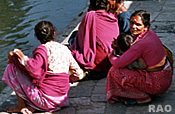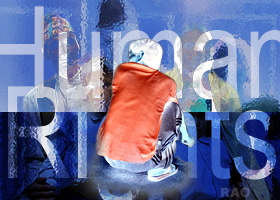 |
Nepal SOCIAL LIFE |
|
 |
Nepal Information |
|
|
 |
|
Discrimination continues against Dalits
|
 |
KATHMANDU, 24 December 2010 (IRIN)
 |
| Dalit communities, the lowest of the 100 caste groups in Nepal, continue to be marginalized, despite the fact that caste-based discrimination was abolished in 1963, activists say.
"Untouchability and discrimination were legitimized by the state over a century ago," said Bhakta Biswakarma, national head of the advocacy group, Nepal National Dalit Social Welfare Organization. |
|
"Today we see the state doing little to change the situation. Discrimination against the Dalit as the untouchable caste is still practised so rigidly - especially in the remote areas."
The 1854 Civil Code, introduced by the Rana regime, explicitly declared the Dalits untouchable, the lowest status within the Hindu social hierarchical structure.
This imposed strict regulations on where the Dalit were allowed to live (they could not enter temples or use the same tap water as higher castes), forbad them from education and from participating in community festivals.
Those who defied the law of untouchability were punished; the state imposed the practice of discrimination on society, said Suman Poudel, an official with the Dalit NGO Federation (DNF).
Little has changed for the estimated 23 Dalit communities in the country's hill and Terai regions, despite the propagation of legal rights.
Impoverished and neglected
Dalit communities have the lowest human development rankings in the country: 49.2 percent live below the poverty line compared with a national average of 31 percent, according to the World Bank.
In the Terai, many Dalits are landless and live on less than US$1 a day, Poudel said, while UNDP assessments reveal that their annual per capita income is less than half that of higher castes ($764 to $1,848) across the rest of the country.
With a literacy rate of less than 33.5 percent above grade six (against 67.5 percent among higher-caste Brahmins), and high rates of school dropout, improving the social condition of Dalit communities is a challenge.
Weak implementation
And while caste discrimination was officially abolished in 1963, experts say the government has been weak in enforcing the ban.
"There are a plethora of policies and laws that have been drafted to protect the Dalit," said Oxfam's Robert Sila, a social inclusion and civil society expert. "But there is no seriousness on the government side when it comes to implementing these policies."
One of the pillars of the government's poverty reduction strategy for a long time has been social inclusion, but there is little evidence of that, Sila says.
However, Sudha Neupane, under-secretary for the gender equality and social section of Nepal's Ministry of Local Development, says the government is focusing heavily on combating discrimination.
"The government is very sensitive to the issue of discrimination against the Dalit," Neupane said.
A starting point would be addressing the controversy over population size. Government statistics show that the Dalit make up nearly 13 percent of the 29 million population, although the Dalit put that figure at more than 20 percent.
"A government cannot effectively address the needs of a population if it doesn't have their exact numbers. It should do a fresh census to determine the real numbers," said Sila.
Nepal's last national census was done in 2001 and a new one is expected in 2011.
Source:IRIN 2010
Copyright
© UN Office for the Coordination of Humanitarian Affairs 2007
[
This report does not necessarily reflect the views of the United Nations]
Integrated
Regional Information Networks (IRIN), part of the UN Office for the Coordination
of Humanitarian Affairs (OCHA). |
|
Information
|
 |
|
Links
|
 |
 |
 |
Externe
Links |
|



